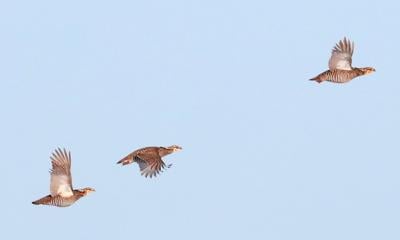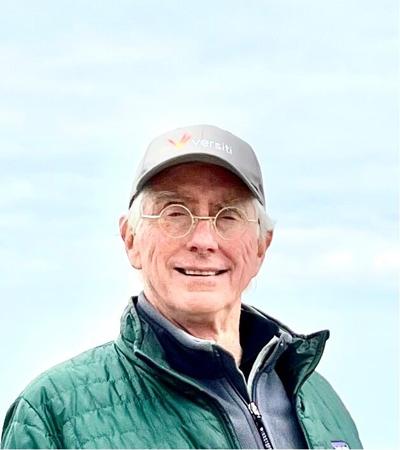In a highly contested case, the Public Service Commission can choose to save the last remaining greater prairie chickens or doom the threatened native species.

Peter D. Ziegler
Its population in Wisconsin is declining, and it was designated as a threatened species in 1979. Tens of millions of dollars have been spent as part of a public-private partnership for land acquisition, research and management for the bird, whose population is stabilized at under 500.
But based on the draft PSC staff recommendation made on Oct. 28, future generations of Wisconsinites may no longer enjoy this natural resource. A large solar field is proposed adjacent to a conservation area for the bird, and in the middle of some of its breeding grounds and habitat.
The major issue is how close solar array panels should be allowed to the habitat and breeding grounds of the prairie chicken about 95 miles north of Madison in Portage County.
People are also reading…
Vista Sands Solar is seeking approval from the PSC to build an enormous $2.4 billion solar farm adjacent to the Buena Vista Wildlife Area southwest of Plover.
About 70% of the species reside in the wildlife area, which includes 7,200 acres purchased by the Society Tympanuchus Cupido Pinnatus (the Latin name for greater prairie chickens) and 4,500 acres by the Dane County Conservation League, all of which are dedicated to the conservation of the bird.
The solar project would cover 7,100 acres and include 2.5 million solar array panels, 32 miles of access roads and many ancillary facilities constructed over three years.
Additionally, the PSC approved the Portage Solar facility in 2023. This 2,167-acre project is adjacent to the proposed Vista Sands Solar project and also will be on habitat for prairie chickens. These two projects total more than 9,000 acres in and adjacent to the home of the largest last remaining populations of the bird in Wisconsin.
Seventy-five years of research by wildlife biologists have shown the bird needs to have large, wide-open landscapes, clear vistas and land devoid of trees, manmade structures and intense human activity to breed and survive.
The final decision now rests with the Public Service Commission, which is expected to rule by January.
The PSC required a full environmental impact statement for this project, which has prompted 1,500 comments in person or writing. The overwhelming majority expressed concerns about the impact on the prairie chicken. While most acknowledged the need to build alternative energy sources, they felt the project should not be configured at the expense of extirpating a native species.
So this isn't about being against the project or solar energy. It's about the location of solar arrays in the project area.
Based on input from expert wildlife biologists, including past and current state Department of Natural Resources biologists who have managed the bird for decades, the Wisconsin Wildlife Federation and the DNR proposed a one-mile buffer between solar array and breeding grounds, and one-half mile from the Buena Vista grasslands.
But three weeks after the release of the final environmental impact statement and just days before the comment period was to close, a DNR supervisor testified that the buffer should not apply to 350 acres because it is "unlikely to cause significant negative impacts" to the bird.
The supervisor cited no science or explanation for this new position. And it is totally inconsistent with the previous DNR view that the prairie chicken is a small fragile population. This changed position has been adopted by the PSC staff. Further, the PSC staff is conspicuously silent on the applicable state statutes that address the need of agencies such as the PSC to protect threatened species.
Relative to a 7,000-acre project, a 350-acre buffer should not be an issue. The solution is simple. The commissioners should require Vista Sands Solar to use some of the 350 acres of the 3,000 alternative acreage they have identified within the project area that is not within the buffer zone.
This alternative preserves all of the objectives sought by the company and the public for alternative energy. If it costs a little more, that is a small price to pay to preserve this native species.
The three PSC commissioners should ask themselves a question: Do they want the greater prairie chicken to go the way of the heath hen or passenger pigeon? I believe the answer is no, in which case the simple solution is for the commissioners to adopt the Wisconsin Wildlife Federation's alternative footprint for solar arrays.
Ziegler, of Slinger, is past president of the Society of Tympanuchus Cupido Pinnatus (Greater Prairie Chicken Society).








